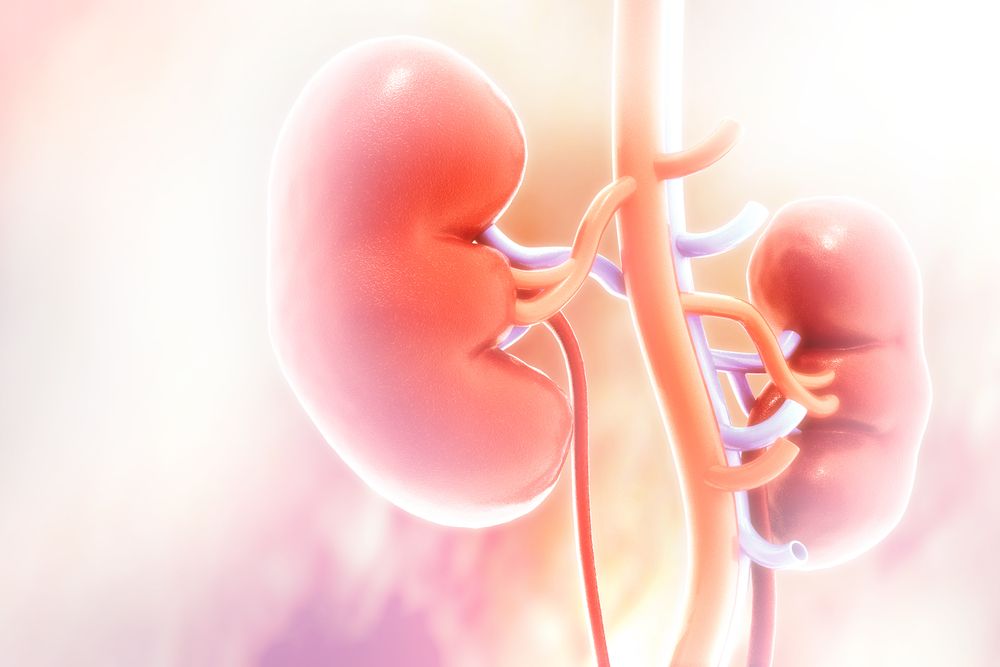Tumor-Immune Evasion Cell Networks May be a New Class of Biomarker in ccRCC
Using a laser ablation system, imaging mass cytometry is designed to measure over 40 metal isotopes in a tumor sample to identify how immune cells in clear cell renal cell carcinoma are organized.
Imaging mass cytometry (IMC) may help to analyze tumor-immune evasion cell networks in clear cell renal cell carcinoma (RCC) samples, according to Hartland W. Jackson, PhD, who indicated that the new technology may allow for scaling single cell biology to look at large clinical cohorts.
In a presentation during the 2023 Kidney Cancer Research Summit (KCRS), Jackson, an investigator at Lunenfeld-Tanenbaum Research Institute of Sinai Health and an associate scientist at the Ontario Institute for Cancer Research, discussed strategies for mapping spatially resolved immune cell networks in clear cell RCC that may be appropriate targets for immunotherapy and how IMC can be used for spatial immune profiling.
“Our goal is to use [IMC], where we can look at over 40 different markers at the same time in a single formalin-fixed paraffin-embedded [FFPE] tissue section to identify how these groups of cells are organized and how they are working together in renal cancers,” according to Hartland W. Jackson, PhD.

Scaling Single-Cell Biology in Clear Cell RCC
Jackson’s institution has paired up with researchers from Lunenfeld-Tanenbaum Research Institute and Princess Margaret Cancer Center as part of a Toronto-based translational partnership to use IMC to look at large clinical cohorts. Notably, a lot of research has previously been conducted by the team, investigating single-cell technologies including suspension cytometry by time of flight (CyTOF) and single-cell RNA sequencing.
The team previously evaluated how immune cells were spatially organized within the tumors of patients with clear cell RCC as part of a single cell benchmarking study. When tumor cells underwent evaluation with immunohistochemistry (IHC; n = 59), CyTOF (n = 65), and single-cell RNA sequencing plus T-cell or B-cell receptor analysis (n = 59), investigators were able to identify 364,304 cells, classifying the patients’ immune environments. Notably, the investigators were able to identify multiple kidney cancer cell populations in the study.
Importantly, however, Jackson indicated that although correlations were identified, it did not confirm whether cells were interacting with each other within a tumor, thus prompting the development of IMC in this patient population.
“Our goal is to use [IMC], where we can look at over 40 different markers at the same time in a single formalin-fixed paraffin-embedded [FFPE] tissue section to identify how these groups of cells are organized and how they are working together in renal cancers,” Jackson said.
Mechanism of Imaging Mass Cytometry
Jackson noted that IMC involves staining protocols that are comparable to those of IHC, although the former makes use of antibodies each labelled with a specific metal isotope of a certain mass. After the sample has been dried out completely, a laser ablation system is used to rasterize the tissue sample that is then aerosolized, atomized, and ionized, into the mass spectrometry, producing an individual readout for each laser shot. With a single laser shot, investigators are able to analyze over 40 metal isotopes that represent each antibody and becomes a pixel in an image.
Jackson indicated that there are a handful of reasons as to why this technology may be used to exam more patients, one of which is because the imaging is based on FFPE sections, no cell loss can occur. Additionally, he indicated that it would be feasible to collect data from small or rare samples; when using a whole slide, it could be possible to analyze over a million cells per sample, he said.
According to Jackson, this method would allow the profiling of immune cells in biobanked tissues from samples that are up to 20 years old. Due to the long shelf life of samples that are analyzed in this manner, practitioner should be able to analyze samples in large batches and standardize stains across a large number of samples.
Preliminary research is examining 5 to 6 tumor-associated macrophage phenotypes and how they are organized in tumors. Previously, investigators have needed to examine large clinical cohorts of tumor microarrays and quantify the types of cells that are present. However, the new strategy may allow practitioners to go beyond identifying cells in a tumor and instead show how they are organized.
“Beyond just seeing these cell types are in a tumor, we see where they are and where they’re organized in tumors,” Jackson said. “You can actually identify which cells are interacting with each other and then use analysis to identify communities of cells, whether these are tumor communities or tumor microenvironment-immune communities. We can see that in breast cancer that these features, the organization of the cells, actually provided clinical outcome related features more than just the single cell populations.”
Future IHC Research
Investigators in the Toronto-based partnership are conducting a retrospective IMC analysis for clinical outcomes among patients with clear cell RCC. The analysis will include 350 patients in a discovery cohort and an additional 350 in a validation cohort, with IMC producing approximately 3500 images with 45-plex measurements. Investigators will then count the immune cells in each sample and observe how they are organized. The ultimate objective is to identify whether there are networks of immune cells and if they respond to treatment with immunotherapy.
“ What we're doing going forward is we want to see [whether] we now have functional models. We need to go to humanized mouse models. The only reason they will do that is the lab has also created mouse immune profiling antibody panels to do 3 to 4 markers in mouse tissues at the same time. The idea would be [to determine if] we identify models that also have the same organization immune cells,” Jackson concluded
Reference
Jackson HW. Identifying novel immune evasion tumor immune networks as targets for ccRCC immunotherapy. Presented at the 2023 Kidney Cancer Research Summit; July 13-14, 2023; Boston, MA. Abstract 7.